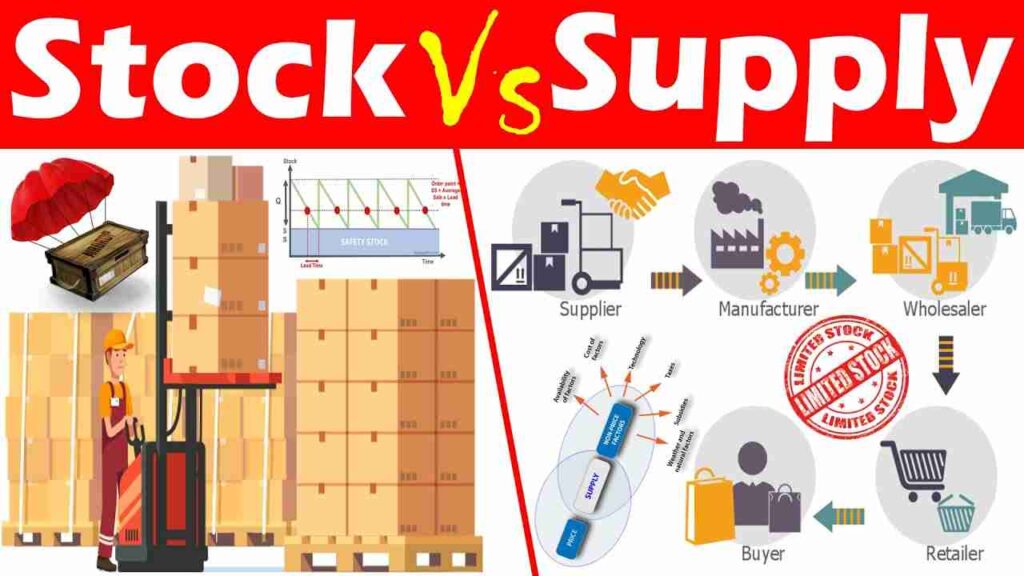
Explore Key 10 Difference between Stock and Supply
Stock and supply may seem like similar concepts at first glance, but there are significant differences between the two that are crucial to understand. Let’s explore 10 Difference between Stock and Supply in a simpler terms that will help you write answers in your exams.
10 Difference between Stock and Supply
Nature of Ownership: Supply refers to the act of providing or delivering those goods to meet demand, whereas stock refers to the inventory of goods or products that a company holds for sale.
Timeframe: Goods that are already in possession and prepared for use or sale are typically referred to as stock. The ongoing process of purchasing and replenishing inventory, in contrast, is known as supply. This process is done to keep products available.
Focus: The amount of goods that are readily available at any given time, reflecting the company’s current inventory levels, is what is meant by stock. However, supply is more focused on maintaining a constant flow of goods to satisfy demand over time.
Demand-Oriented Stock Management: By keeping adequate inventory levels, stock management focuses on foreseeing and satisfying both present and future demand. Optimising the process of acquiring and delivering goods to satisfy that demand is the main goal of supply management.
Supply Chain Integration: Integration of the supply chain is the process of controlling the flow of goods from the sourcing of raw materials through production, distribution, and finally to the final consumer. While stock, on the other hand, mainly focuses on the quantity of finished goods in stock and their accessibility.
Risk Management: Risk management involves weighing the risks of stockouts (inadequate inventory) and holding surplus stock (potential losses). In contrast, supply management works to reduce the risks connected to supply chain disruptions, such as delivery delays or raw material shortages.
Strategic Importance: Stock management is crucial for ensuring immediate product availability, preserving customer satisfaction, and preventing missed sales opportunities. Long-term planning, managing suppliers, and cost optimisation are all aspects of supply management’s more strategic role.
Cost considerations: Managing stock involves paying for the expenses of keeping inventory on hand, such as warehousing, insurance, and potential obsolescence. Supply management entails reducing costs along the entire supply chain by negotiating advantageous supplier contracts and cutting down on transportation costs, for example.
Planning and forecasting: To determine the ideal inventory levels, effective stock management depends on precise demand forecasting. To ensure a consistent supply of goods, supply management goes beyond forecasting to include strategic planning, market analysis, and supplier collaboration.
Flexibility and Adaptability: The main goal of stock management is to modify inventory levels in response to sudden changes in demand. To respond to broader changes in market circumstances, such as shifting consumer preferences, new trends, or supply chain disruptions, supply management requires flexibility.
To optimise operations, balance costs and risks, and guarantee customer satisfaction, businesses must understand these differences between stock and supply. Organisations can create thorough strategies to efficiently manage their stock and supply by recognising the distinctive traits and requirements of each.
Also Read: Explore 10 Key Difference between Resistor and Resistance